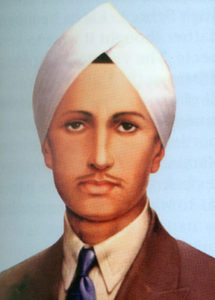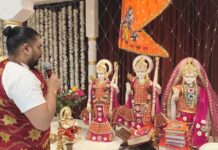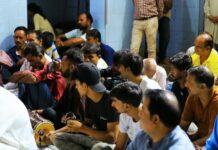
Kartar Singh Sarabha was one of the first to sacrifice his life for India’s freedom. His 120th birth anniversary falls on May 24.
Kartar Singh was 15 in 1912 when he came for higher education in U.C. Berkeley. On reaching San Francisco, the teenager was asked humiliating questions by the Immigration officer. He saw other Indians being subjected to similar treatment while potential immigrants with Caucasian features were let in with the barest of formalities.
He asked someone sitting next to him as to why this was happening. “It is because Indians are slaves,” he was told. The degrading experience stayed etched in young Kartar’s memory.
Kartar Singh met other like-minded Indians at the university campus and came to learn more about the injustices being meted out to the Indian expatriate community. Several students used to work as farm labor during summer or winter breaks and faced unequal treatment. Kartar had also worked as a fruit picker alongside several other Sikh laborers and knew of the racial slurs that were thrown at them. He had realized that they were paid less than other farm workers because of the color of their skin.
In April, 1913, Indians in Astoria, Oregon formed Hindustani Association of the Pacific Coast with its main objective to liberate India from the British colonialism and help establish a free and independent India. The headquarter of the association was established in San Francisco and a newspaper titled Gadar was launched for free distribution to promote the aims, objectives and activities of the association.
Gadar was published in Punjabi and Urdu and in some other Indian languages and was sent to Indians all over the world. Kartar Singh was put in charge of Gadar in Punjabi language. It carried articles about the atrocities of the British on Indians and racial prejudice and discrimination against Indians in the United States. The articles exhorted people to join the association, urged them to unite and rise up against the British rule.
The Gadar magazine became very popular for its revolutionary and patriotic ideas and over a period of time, the Hindustani Association of the Pacific Coast itself became known as the Gadar Party.
The organization was still very young, when in August, 1914, World War I broke out, and the British forces got busy fighting war against the Germans. The Gadarites decided that the time for action had come as World War l provided them a golden opportunity to attain their goal. They published
‘declaration of war’ against the British in the August issue of Gadar and sent to Indians everywhere, especially to Indian soldiers in British cantonments. The Gadarites inspired thousands of Indians who left for India for rebellion and overthrow of the British Government.
Kartar Singh left the United States on September 15, 1914, with Satyen Sen and Vishnu Ganesh Pingle. They met with the well-known revolutionary Rash Behari Bose in Benares and shared their plans for throwing the British out of India. Unfortunately, this information reached the British and several Gadarites were arrested at the ports on landing. Meanwhile, Kartar Singh went about preparing the base for the revolution in Punjab. He drew plans to infiltrate the Indian army, went to several cantonments with Pingle to excite the soldiers to fight – not for the British but against the British Empire – and free India from the shackles of British imperialism.
On 25 January, 1915, Rash Behari Bose reached Amritsar and went about assessing the preparations. At a meeting on 12 February, 1915, the date for the revolt was set – 21 February 1915. The plan was to attack cantonments of Mian Mir and Ferozepur while Ambala was to be prepped for a mutiny.
As the Gadarites went about making their final preparations for the attack, they were unaware of a traitor, Kirpal Singh in their midst, who had revealed the plan to the police. The planned daring attempt to free India from the British serfdom was foiled by the traitor. Many Gadarites were arrested and put in jail.
Kartar Singh, Harnam Singh Tundilat and Jagit Singh escaped the police net. They decided to go to Afghanistan and continue their struggle from there. But Kartar’s conscience did not permit him to run away when all his comrades had been arrested. On 2 March 1915, they came back to Sargodha and started propagating rebellion amongst the army people there. Risaldar Ganda Singh who was to help them get rifles, got them arrested instead.
Kartar Singh went to trial with the other Gadarites in Lahore in what came to be called the Lahore Conspiracy case. In September 1915, the sentence was pronounced-he was to be hanged till death. On 16 November, 1915, Kartar Singh Sarabha was only 19 years old and along with twenty seven of his comrades, he was to be hanged to death. But so severe was the public outcry at the judgement that Lord Hardinge, the Governor General of India, was forced to intervene. At the last moment, the sentence of 17 of the Gadarites was changed from death to imprisonment and deportation for life in the Andaman Cellular jail.
But for Kartar Singh Sarabha, the gallows awaited. During the trial, Kartar Singh had refused counsel. While the judge was impressed by the young man’s intellect, he showed no mercy. He labeled the young boy the ‘most dangerous of all rebels’. The judge said, “He is very proud of the crimes committed by him. He does not deserve mercy and should be sentenced to death.” Witnesses say that the 19 year old sang patriotic songs all the way to the gallows, kissed the hangman’s noose, and embraced martyrdom.
At the age of 19, Kartar Singh, student, revolutionary, inspiring jewel in India’s freedom struggle, became Shaheed Kartar Singh Sarabha. No wonder, this young man inspired the likes of Shaheed Bhagat Singh, who is known to have called him his guru.
Inder Singh is Chairman Global Organization of People of Indian Origin
Inder Singh






